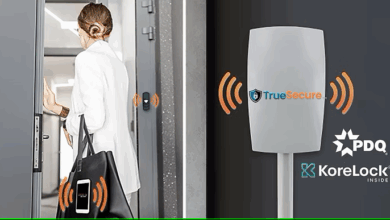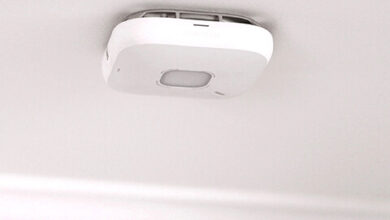Smart Home Trends: Technology making daily living easier for seniors and those with disabilities
By Daryl Friedman
From enhanced safety features to improved accessibility, the integration of smart home technology is revolutionizing the way individuals with disabilities and those aging in place can live independently in their own homes. Smart home devices are not one-size-fits-all; they can be tailored to accommodate diverse needs and offer a range of solutions to help facilitate a more comfortable and secure environment for the 61 million adults living with a disability* and the 77% of adults over the age of 50 who prefer to age in place**.
Empowering independence
At-home connected tech plays an important role in improving the quality of life for people with disabilities, or those choosing to age in place, by empowering independence. It can significantly enhance safety and security through the integration of devices like smart locks, security cameras and motion sensors, which enable real-time monitoring and alerts, fostering a sense of security for both seniors and their loved ones.
Smart home technology also increases accessibility, making daily tasks more manageable for individuals with disabilities or limited mobility. By automating processes such as adjusting lighting, controlling appliances and accessing entertainment systems through voice commands or smartphone apps, smart homes promote independence and ease of living, ultimately contributing to a higher quality of life for those who rely on them.
Smart home tech to consider
When considering at-home connected tech for individuals with disabilities or seniors aging in place, it’s important to evaluate which devices best suit their needs and living situations. The latest tech fostering independence and safety include:
Voice-activated assistants/speakers
Voice-activated assistants and speakers serve as invaluable companions in smart homes. These speakers enable hands-free control of smart devices and assist with various tasks such as setting reminders, checking the weather or making phone calls. By simply issuing voice commands, users can accomplish tasks without the need for manual interaction, creating convenience and accessibility within the home.
Smart lighting systems
For individuals with impaired vision, automated lighting systems offer significant benefits in terms of safety and comfort. These systems can adjust brightness levels and colors according to preferences or schedules, helping to reduce the risk of falls and enhancing visual comfort.
Smart thermostats and climate control
Maintaining a comfortable indoor environment is important for everyone, and smart thermostats can play a crucial role in achieving that goal. These devices regulate indoor temperature and humidity levels and allow users to adjust settings easily via voice commands or smartphone apps, ensuring comfort and energy efficiency, while also accommodating individual preferences and mobility limitations.
Smart stoves and ovens
Smart stoves and ovens can be integrated into a smart home ecosystem, allowing users to control cooking settings remotely via smartphone apps or voice commands. For individuals with mobility limitations, this means the ability to preheat the oven, set timers or adjust cooking temperatures without having to physically interact with the appliance. Additionally, smart stoves and ovens often come equipped with safety features, such as automatic shutoff mechanisms and alerts for overheating or unattended cooking, reducing the risk of kitchen accidents.
Fall detection and emergency response systems
For individuals at risk of falls or medical emergencies, fall detection and emergency response systems provide support and peace of mind. Wearable devices equipped with fall detection sensors or smart home systems with integrated emergency buttons can automatically alert caregivers or emergency services in the event of a fall or other medical emergencies. These systems enable prompt intervention and assistance, reducing the severity of injuries and improving outcomes for individuals with mobility challenges or health concerns.
Security systems
Safety and security are always top of mind for caregivers, and smart security systems offer advanced features that can strengthen the protection of individuals with disabilities and seniors aging in place. These systems typically include remote monitoring, motion detection and two-way communication capabilities, enabling individuals to monitor their homes from anywhere and receive alerts about suspicious activity. Smart security systems also often include video or camera surveillance, which can deter potential intruders and help individuals feel safer at home.
Role of smart home professionals
Smart home professionals can assess residents’ specific needs and recommend tailored solutions. This involves conducting thorough home assessments to help design and install customized smart home systems that seamlessly integrate various connected devices that are easy to use. Smart home professionals provide essential training on implemented technology, empowering seniors and caregivers to utilize it effectively. They also regularly update and maintain the smart home system to ensure optimal performance and address any issues that may arise over time.
By collaborating with a professional, caregivers can seamlessly integrate connected technology into the homes of individuals aging in place and those with disabilities, empowering them to live safer and more independently.
* Prevalence of Disability and Disability Types by Urban-Rural County Classification – United States, 2016. American Journal of Preventive Medicine
** Aging in Place: Are We Prepared? National Library of Medicine
Daryl Friedman is global president and CEO of CEDIA, the association for smart home professionals.
Image courtesy of CEDIA




